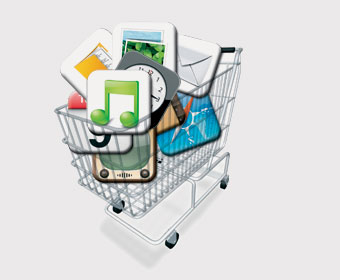US carrier Verizon Wireless rolled its own-branded app store out across more BlackBerry devices this week, intensifying competition in the space and going up against RIM’s own offering.
July 20, 2010

US carrier Verizon Wireless rolled its own-branded app store out across more BlackBerry devices this week, intensifying competition in the space and going up against RIM’s own offering.
The V Cast Apps mobile applications storefront is now available on select BlackBerry smartphones including the Bold 9650, Storm2 9550, Curve 8530 and Tour 9630 and will be coming in the next couple of weeks to the Storm 9530 and Curve 8330.
Verizon will push an app store icon out to all BlackBerrys on its network, and interestingly controls the billing relationship with the end user so app bought in the store are charged to the phone bill.
Since its launch a year ago, the Verizon Developer Community has attracted more than 5,000 participants, Verizon said. But in some ways the initiative conflicts with Verizon’s membership in the WAC – the recently formed Wholesale Applications Community – an alliance designed to build an open platform for delivering applications to all mobile phone users. Although it may be some time before we see anything concrete from such a disparate group.
There’s also the somewhat competitive element of RIM’s own BlackBerry App World, which also sell apps direct to end users, with RIM in charge of the billing system. It could all get a bit confusing. Or maybe choice is what is needed.
In related news, Juniper Research expects that the annual number of consumer-oriented handset downloads is expected to rise from less than 2.6 billion in 2009 to more than 25 billion in 2015 driven by app store activity.
The researcher noted that ‘freemium’ is also becoming the prevalent business model, with publishers increasingly offering applications free at point of sale and subsequently monetising them via in-app billing of subscription-based services, upgrades to premium content or micropayments for virtual items. Although, whether other players can replicate the success of the Apple App Store remains to be seen. “Apple has been able to achieve several billion downloads from a comparatively small handset base because customers are buying the iPhone for the apps. That’s not been the case with other handsets. So even if you have a subscriber base of tens of millions, your addressable market is a fraction of that – and spread across a variety of operating systems and handsets,” said Juniper’s Windsor Holden.
About the Author(s)
You May Also Like








.png?width=300&auto=webp&quality=80&disable=upscale)


_1.jpg?width=300&auto=webp&quality=80&disable=upscale)


.png?width=800&auto=webp&quality=80&disable=upscale)